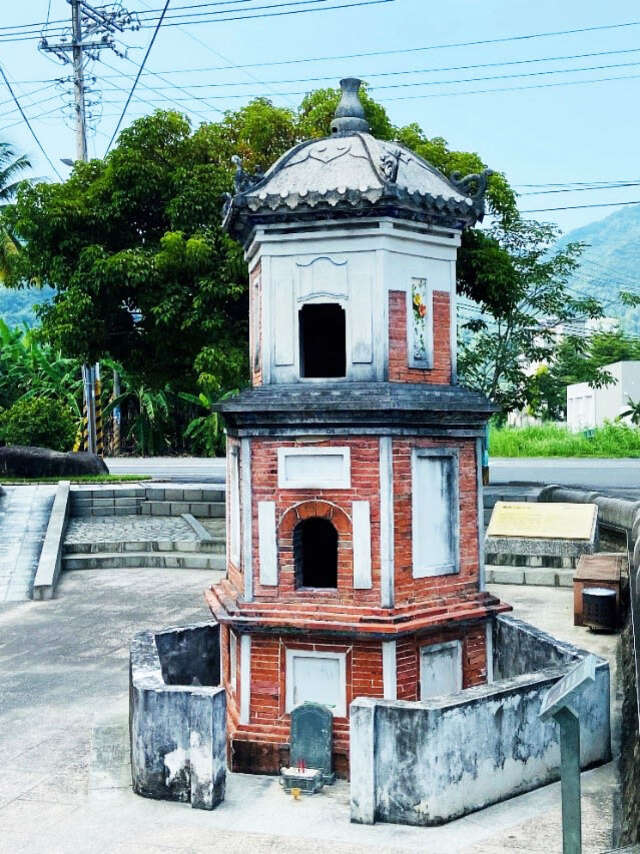Meinong Jengzi Pavilion Introduction
Jingzit Pavilion, also known as Shengji Pavilion, Jingsheng Pavilion, and Zizhi Pavilion, embodies the traditional concept of "respect for the written word" and "upholding literary elegance," deeply influenced by Confucianism. Additionally, the Hakka people's reverence for written papers has led to the establishment of furnaces for burning paper money in villages. Currently, there are four well-preserved Jingzit Pavilions in Meinong District, located in Jinguoliao, Shangzhuang, and Longdu, with Mino Village's Jingzit Pavilion, situated at the intersection of Zhongshan Road and Yong'an Road and established during the Qianlong era, being the oldest and most complete, classified as a national third-level historical site. Mino Village's Jingzit Pavilion is a hollow six-sided brick tower built with decorative tail bricks. The pavilion is adorned with painted petal-shaped cut-outs, and the top features shallow carvings of auspicious patterns, presenting an elegant and ancient style. Below the Jingzit Pavilion, a stone tablet honors deities closely related to education, including Cangjie, Confucius, and Wenchang Dijun, reflecting Meinong's emphasis on literature and education.






























